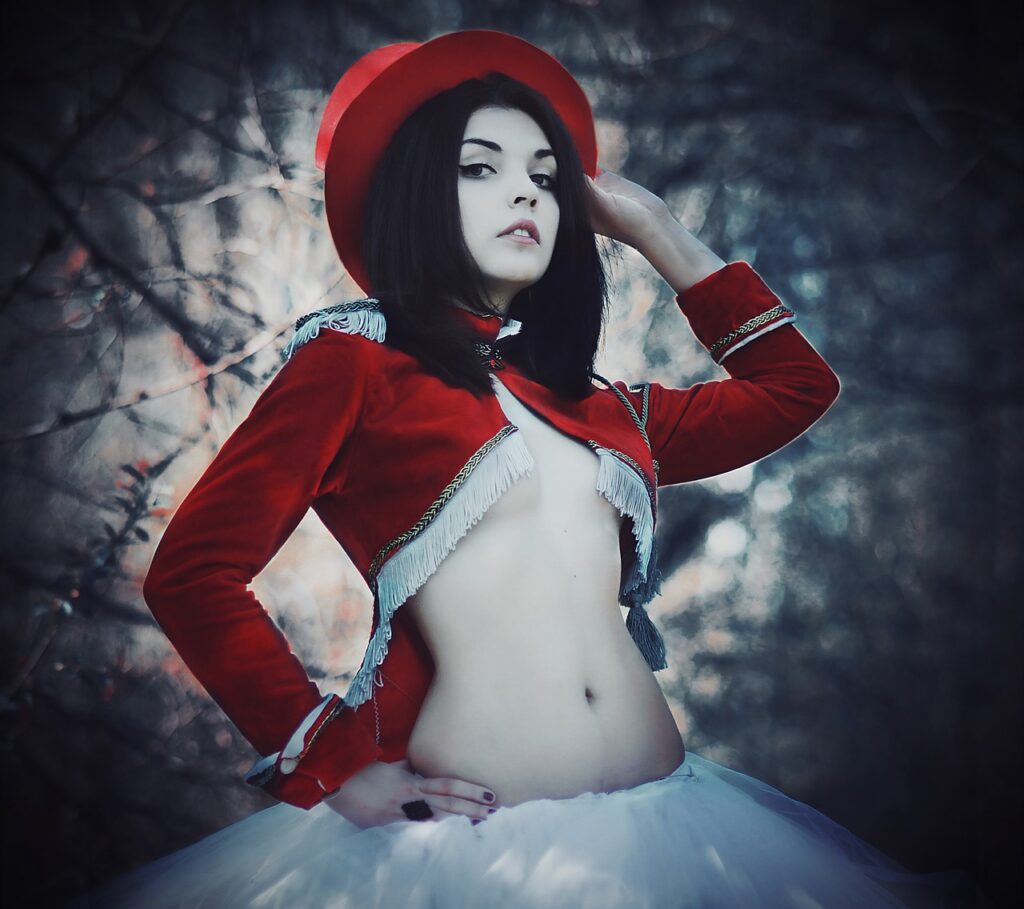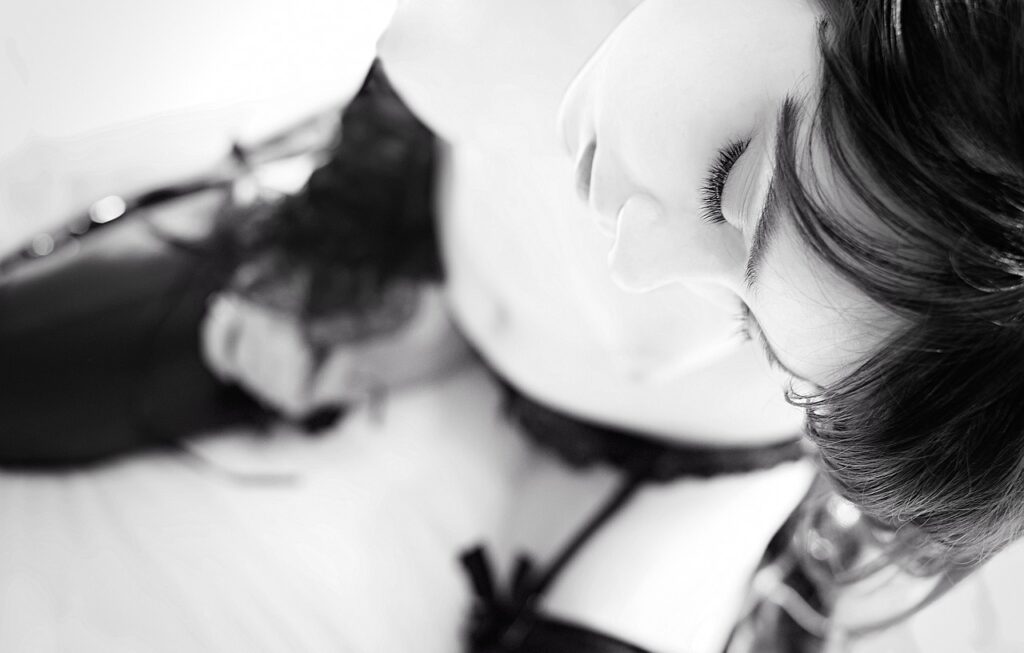March 18, 2024
Pornography or Erotica? On Art’s Function, Purpose, and Essence
The topic might sound unusual and, ironically enough, this too is part of the theme. Namely, we should be able to explore a topic as ubiquitous as human sexuality. The differentiation between pornography and erotica (erotic art, that is) is problematic. United States Supreme Court Justice Potter Stewart notoriously said he couldn’t define it but he knew it when he saw it.
That isn’t good enough.
I want to define it and I want to understand it. I’ve had some discussions on the topic with my friend Igor, and I decided to take my side of the emails we exchanged, edit it for length and focus, and turn it into a post.
But here’s an important caveat: My main interest isn’t in defining pornography (or erotica). Rather, I want to create a more general theoretical framework that talks about the differences between art’s function, purpose, and essence. So while there will be a fairly in-depth discussion on pornography, erotica, and their differences, my ultimate focus will divert to art in general.

The Paradoxical State of Modern Pornography
The inspiration behind reflecting on this topic can be traced to a very serendipitous coincidence: I was browsing a forum dedicated on all things retro, from old photos to VCR and from old magazines to old computer games.
A forum user (for entirely parenthetical purposes, trying to speculate on when a certain street photo was taken), shared the cover of a 70s Playboy magazine. Seeing that cover set in motion this entire train of thought, because it made me realize that even “pornography” (more of this in a moment) seems to have deteriorated significantly in the last few decades.
Pornography doesn’t interest me – also for reasons that become apparent in the following paragraphs – but I’d be a damn liar if I claimed I hadn’t ever seen any. With this in mind, though I’m certainly not a specialist by any stretch of the imagination, at the same time certain things seem fairly obvious even to a casual observer.
“Amateurs” and Market Capitalism
When you think of porn nowadays, there is an intriguing aspect that seems to almost pass unnoticed: The overwhelming majority of modern pornography is ontologically paradoxical in that it strives to appear as amateur (that is, made by “normal” people in their own homes) while actually being professional (made for and motivated by monetary gainOf course the presence of social media, “likes”, and overall attention further complicate the motivational elements.).
Inevitably, this means it needs to compete for market share, appeal to (perceived) largest common denominators, and be as pleasing to as many people as possible, promoting a sense of sameness. Naturally, it also needs to be optimized for ideal timings, “aesthetics”, “narrative”, and so on.
Truly, this isn’t different from any average genre novel whose author is in for a quick buck. Capitalism and blood-dripping marketing terms inform both processes and have affected the quality of both.
Remember those hilarious genres – check my relevant post – like “historical romantic fiction late 1800s western mail order bride”? This isn’t all that different (in dynamics and function; in its conceptual mutilation) from the way modern pornography strives for categorization by body part size, age, ethnicity, and all sorts of details I’ll spare you.
Pornography vs Erotica: The Role of Affective Response
Both processes, pornography and erotica, attempt to instigate a response in an audience – one that, in the majority of cases, is normatively cis straight male.
However, the key difference is that whereas pornography only cares for a bodily response, a bestial, biological arousal construed in purely objectified, fetishized termsPornography focuses on isolated, conceptually mutilated body parts. Faces, if shown at all, are only there to reinforce the bodily response., erotica is first and foremost about a psychological response.
Erotic art, though certainly including the idea of a body seeking other bodies (and undeniably causing bodily reactions), is primarily about understanding the human beings involved – both the viewer themselves and the artistic subject (and what they symbolize). Erotic art is about asking questions regarding ourselves and each other as (sexual) beings.

Pornography and Erotica: Art and Framework
As I mentioned above, I’m not interested in pornography (or erotica), not even from an academic perspective. It has been examined for millennia and I find it a topic of overall low importance . But I am interested in reaching conclusions and more general theoretical understanding about art. And in the differentiation between pornography and erotica, I see a conceptual opportunity.
The reasons lie in the way erotic art disassociates itself from pornography in terms of framework.
Focusing on erotic imagery in magazines such as Playboy – and I will focus on its earlier iterations, from the 60s and 70s, for reasons I will explain – we need to make a distinction between several aspects:
- Did the creators/editors of Playboy intend it as erotic or as pornographic?
- Did the models/photographers of Playboy work on the photos they produced thinking of them as erotic art or as pornography?
- Did the audiences of Playboy consider it erotic or pornographic?
- Despite the above, was Playboy erotic or pornographic?
What we’re dealing here is a separation between function and framework – or, in other words, between intentional purpose and unintentional effect.
I am totally ready to believe that the creators/editors, the audiences, and perhaps some (most?) of the models and photographers would consider it pornographic. Hell, let’s double-down: I assume that all models and photographers involved considered their work pornographic.
The key lies in the last item on the list: Despite their intended purposes and the function they might have served for the intended audiences, I’d argue the photos of Playboy were not pornography but erotica. They were art, even if subconsciously so.
Questions about Youth, Beauty, Eroticism, Humanity
To be clear, there is no claim on quality; this is an entirely different discussion. Yet the framework the old Playboy photos operated was artistic because it focused on the experience and feeling.
From the softness of the light to the composition (indeed, sometimes not even including full frontal nudity), and from the models’ expressions to settings, I would argue the photos don’t merely communicate bestial, mindless lust. That is to say, these old depictions of nudity found on Playboy pages don’t say “I am a piece of meat, come fuck me”.
Instead – and again, it is crucial to remember that this can even be beyond the conscious control of the authors (editors, photographers, models) – they pose questions about youth, beauty, eroticism, sexuality, and, ultimately, what it means to be human.
Expanding Pornography and Erotica: The Castoriadian Paradigm
Playboy photos eventually began to change: They became less freely artistic in terms of composition and expression, and more narrowly confined into a marketable, easy-to-repeat product. Though the shift was slow and gradual (and certainly subjective to detect), based on my skimming throughAn interesting detail: During my email exchange with Igor, I only guessed the progression described here; I didn’t even know whether Playboy continued to exist after the 90s. I verified my guess during the preparation of this post. representative samples online, I would place the early borders of this shift somewhere in the late 70s to early 80s. By late 80s to early 90s the process was all but complete.
Photos subtly began to be less focused on traditional artistic elements of photography (light, composition, authenticity, expression) and more aligned with market expectations: The models needed to be of a particular body type and appearance, consistent with the temporal and cultural context; they needed to wear this kind of bikini or lingerie and they needed to be in this kind of setting (usually indoors and very controlled); and their expressions were much more artificially constructed to, ironically enough, appear casually lustful.
Perhaps such photos weren’t, still, pornographic, but they were also much less likely to be thought of as art. They were certainly pornographic metaphorically in the Castoriadian sense: by giving up on any notions (conscious or subconscious) of photographic art, simply treating photos, models, and photographers like production-line cattle.
In essence, the narrowing of the interpretative possibilities – as a result of tighter marketing requirements – precludes the emergence of subconscious art. That is to say, the phenomenon of erotic art materializing even against authorial intent is less likely in a tightly controlled, quantified, and optimized environment, not unlike a narrowly defined genre novel that loses any “accidental” artistic opportunity to escape authorial control.

Decoupling Art from Function
My friend Igor argues that the best art is anti-pornographic, and I totally agree – considering the term “pornography” in its wider, Castoriadian meaning. That is, the best art attempts to break from the norm (especially the profit-driven norm); true art is defiant, divergent, different.
True art seeks to find the connections inherent in everything (but obscured by pornography): The way the female body – indeed, the female body parts – becomes a fetishized object and thus precludes connection with the “soul” inhabiting the body is akin to the fetishized function of industrialized “artistic” ingredients that have long lost their claim to authenticity and connection, and instead only serve the role of conceptual incest.
Let’s only think of all the edgelord gory exhibits of modern art installations that excite the viewer through aesthetical prostitution without even hinting at the driving force behind these depictions. They show the “body parts” without showing the heart and mind that moves them.
Or, here’s how my alter ego, Punning Walrus, sees it:
The Paradox of Subconscious Function
So, in this theoretical framework, true art is disassociated from function. That is to say, true art doesn’t try to appeal to an audience’s desires or wishes; to do so would distance it from authenticity and imagination.
This is partly paradoxical, since art is certainly connected to function: It attempts to communicate an experience and even connect experiences to others, people to one another – not to mention the function of the audience. And yet at the same time (and again we have to recognize a paradox) the best art is the kind of art which ignores this function, at least on a conscious level.
True artists, to recall David Foster Wallace, are entirely themselves. They fracture reality the way they feel they have to, and then anyone who connects with this manner of fracturing reality can appreciate it. But this fracturing cannot be authentic if it occurs with this function as a conscious thought.
That’s, I think, the deeper lesson here.
There’s this horrible irony in contemporary gory art exhibitions: they hide the fact that they cannot show the capitalist body: in both senses: the body of the owners of the great companies, as they could be legally prosecuted, and the body of capitalism itself, its very tentacles spreading throughout our material everyday reality. But this ethereal, absent-yet-present phantasmagoric body, tears our bodies to shreds with its ever-lowering payment rates, its unrelenting work schedules, its deregulation of public law and services in order to privatize them and steal more surplus value. We still live under this 19th century monstrosity, but now we’re facing no a Henry James novel’s ghost, but a William Gibson’s cyberpunk holographic demon.
That’s exactly how it is. Žižek aptly points out how, traditionally, surplus pleasure was hidden behind ideology whereas now it’s almost reversed, and we have ideology hidden behind surplus pleasure. For example, in totalitarian states the facade is ethnic purity, down with decadence (and so on and so on, to imitate Žižek), but in order for someone to be “bribed” into buying this, some surplus pleasure must be offered (for example in the form of torturing minorities or whatnot). Today, surplus pleasure (even in its gory expressions, like the modern art gallery) is what is offered without guilt or shame, and conscious effort must be exercised in discovering the ideological baggage lurking.
Interesting times!